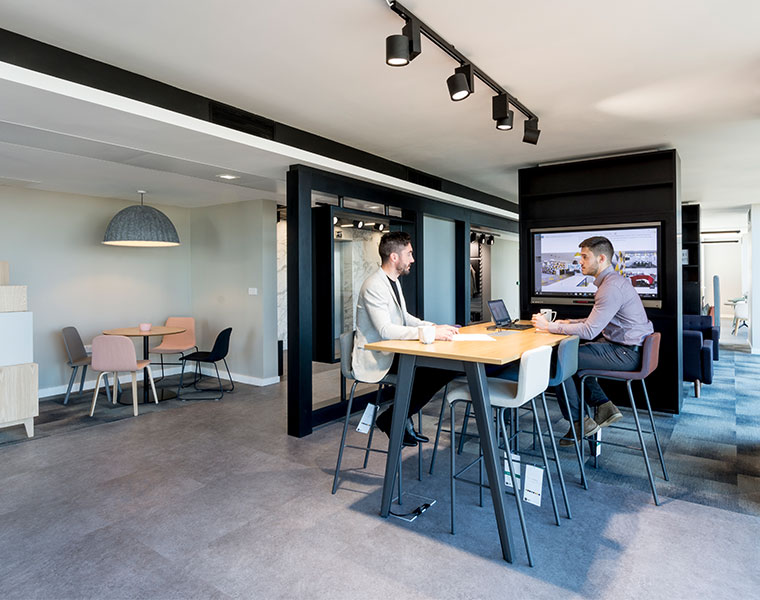You won’t need us to tell you that the modern working world is all about working faster, more efficiently and for longer than ever before. We are spending more and more time in the workplace as requirements become more demanding and the lines between personal and professional lives continue to blur. One of the solutions to help make this happen is the ongoing development of the ‘smart office’.
What is a smart office?
Smart office management app, iOt Space define it as: “a workplace where technology enables people to work better, faster and, of course, smarter […] so they have enough time to focus on growing businesses and innovating”.
Thinking logically about it, the first instances of this were the introduction of things like laptops and the internet. Then came advancements like smartphones, apps and cloud-based software. Today, the smart office is transforming even further with the implementation of high-tech integrated systems and gadgets which streamline productivity, as well as making connectivity and communication slicker.
The need for such a tech-dependent workplace has been catalysed, of course, by the growing profile of agile working, activity-based work (ABW) and a nomadic approach to where, when, how and with who employees work. Making an office ‘smart’ facilitates the choice and control people now need in order to fulfill wellbeing, job satisfaction and loyalty to the company they work for and its culture.
What are the benefits of a smart office?
Making moves towards becoming a smart office isn’t just about boasting the latest technology or getting your hands on the latest piece of kit. There are also a whole host of benefits which smart working can bring to the table:
- Improved productivity and efficiency
- Better communication, connectivity and collaboration between employees
- Inspiring a positive and forward-thinking culture change to future-proof your workplace
- Facilitating better choice & control and therefore, a better employee experience
- Attraction and retention of new talent
- The change to see usage of things like meeting rooms and work settings to evaluate and adapt
- More comprehensive time management and processes
How to create a smart office on a budget:
There isn’t a one-size-fits all approach to creating a smart office as it really depends on budget, necessity and how willing a workforce is to adapt to a change in culture and behaviour. Full tech integration can be expensive and time-consuming when it comes to staff training.
Some ways you can start to make your workplace smarter without having to make a huge impact on our budget are:
- Electronic room booking systems to improve time management and space finding
- Sensor activated lights to help preserve energy
- Electronically operated furniture (i.e. height adjustable desks) to improve ergonomics
- Digital signage which can be used for things like brand messaging, information sharing and way-finding
- Video conferencing facilities to connect remote and resident workers
As we’ve mentioned before, as well as providing the digital means to take advantage of the benefits a smart workplace offers, it’s also vital that you consider those who prefer to do things the more traditional way.
Click for further more on how to facilitate both digital and analogue creativity through office design.



